A Brief History of Wicker Furniture
Wicker furniture has a long history that spans nearly 5,000 years – from ancient Egyptian rattan weaving to the outdoor wicker furniture of our present day. The word “wicker” is of Scandinavian descent and originates from the words wika which means “to bend” and vikker which means “willow.” Wicker has been around for thousands of years and is, in fact, one of the oldest furniture-making techniques recorded in history.
To understand the history of wicker furniture, it’s important to be able to distinguish the difference between wicker and rattan (see related topics). Wicker is a type of weave and rattan is the material. The two terms are often mistakenly used interchangeably. Originally used as a basket weaving technique, wicker evolved to be used to make many different items.
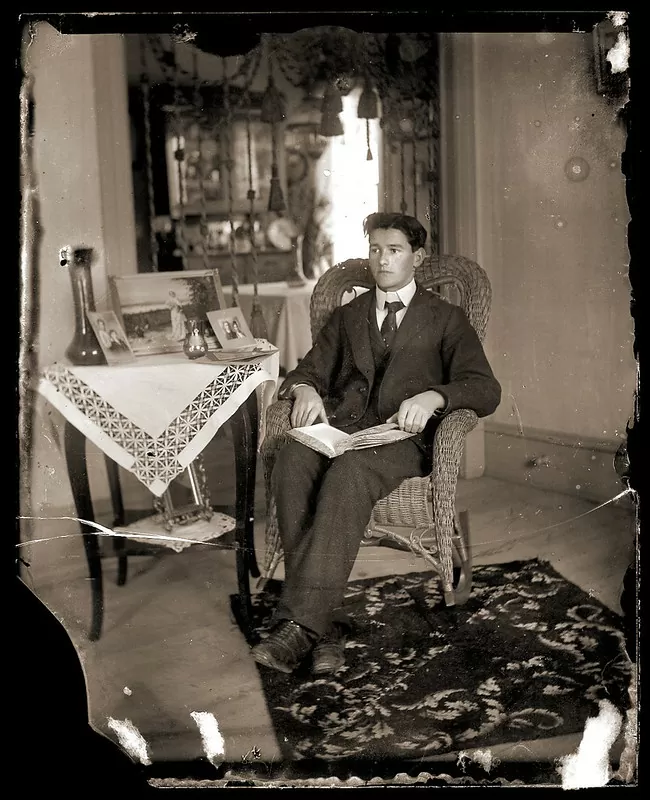
Fun Fact: The first piece of wicker furniture landed in America on the Mayflower in 1620. The item was a wicker baby cradle.
Timeline of Wicker Furniture
- First recordings of wicker furniture date back to 3,000 B.C.
- Victorian Wicker becomes popular during the Golden Era of the Victorian Era (1860-1880).
- Cyrus Wakefield, known as the Father of the Wicker Industry, founds Wakefield Rattan Company in 1851.
- 1897 Wakefield Rattan Company merges with Heywood Brothers & Company to form the Heywood-Wakefield Company.
- Arts and Crafts Movement in the early 1900’s brought about a revival of wicker.
- Wicker became popular in the 1960’s.
- Synthetic resin wicker became a popular commercial grade product in the mid 2000’s.
The History of Wicker Furniture
Wicker has a long and fascinating history that goes all the way back to the times of Ancient Egypt. Originally woven out of natural rattan fibers, wicker has also been made out of cane reeds, plastic, synthetic resin wicker and much more.
Check out our Synthetic Wicker Patio Furniture Buyer’s Guide
The popularity of Wicker transcended from Egypt and Ancient Sumerian Civilizations to Rome, various European countries, and finally arriving in American on the Mayflower in the form of a baby carriage. Archaeologists have even found Egyptian wicker to be made out of rattan and swamp grasses native to the area.
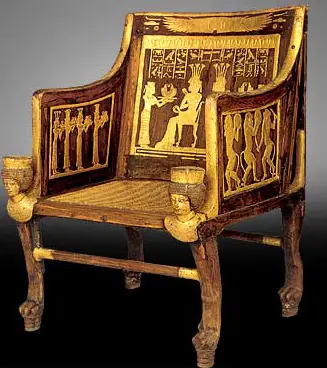
Fun Fact: The Tomb of Tutankhamen revealed samples of early wicker chairs, headboards, and a stool.
Ancient Myths About Wicker
Wicker is woven into the history of many ancient societies. It is said that the Potawatomi Native Americans believed that there was an old woman who lived on the moon weaving a basket. When the basket was finished, it was believed that the world would be destroyed. This never happened because an eclipse destroyed the basket before being completed.
Materials that Have Been Used to Make Wicker
- Rattan (inner core)
- Willow
- Cane Reed (outer skin of rattan)
- Raffia
- Bamboo
- Banana Leaf
- Plastic
- Synthetic Resin
Wicker Used During Ancient Civilizations
Wicker has been recorded as being used for a variety of purposes, including cushions, flooring, transportation, clothing, furniture, shelter, and even utensils. Evidence of Egyptian Wicker work still remains intact today.
Victorian Age Wicker
One of the greatest developments that came about during the Victorian Era was the use of reed to make wicker furniture. This wasn’t the bright idea of a young entrepreneur but rather a response to the shortage of rattan caused by civil unrest in China during 1856. Manufacturers had to experiment with other materials to meet demand for wicker products, but this proved beneficial to the furniture makers.
It was discovered that reed was more flexible than rattan and could be painted or stained. Rattan on the other hand was stiffer which made it harder to weave and could only be shellacked.
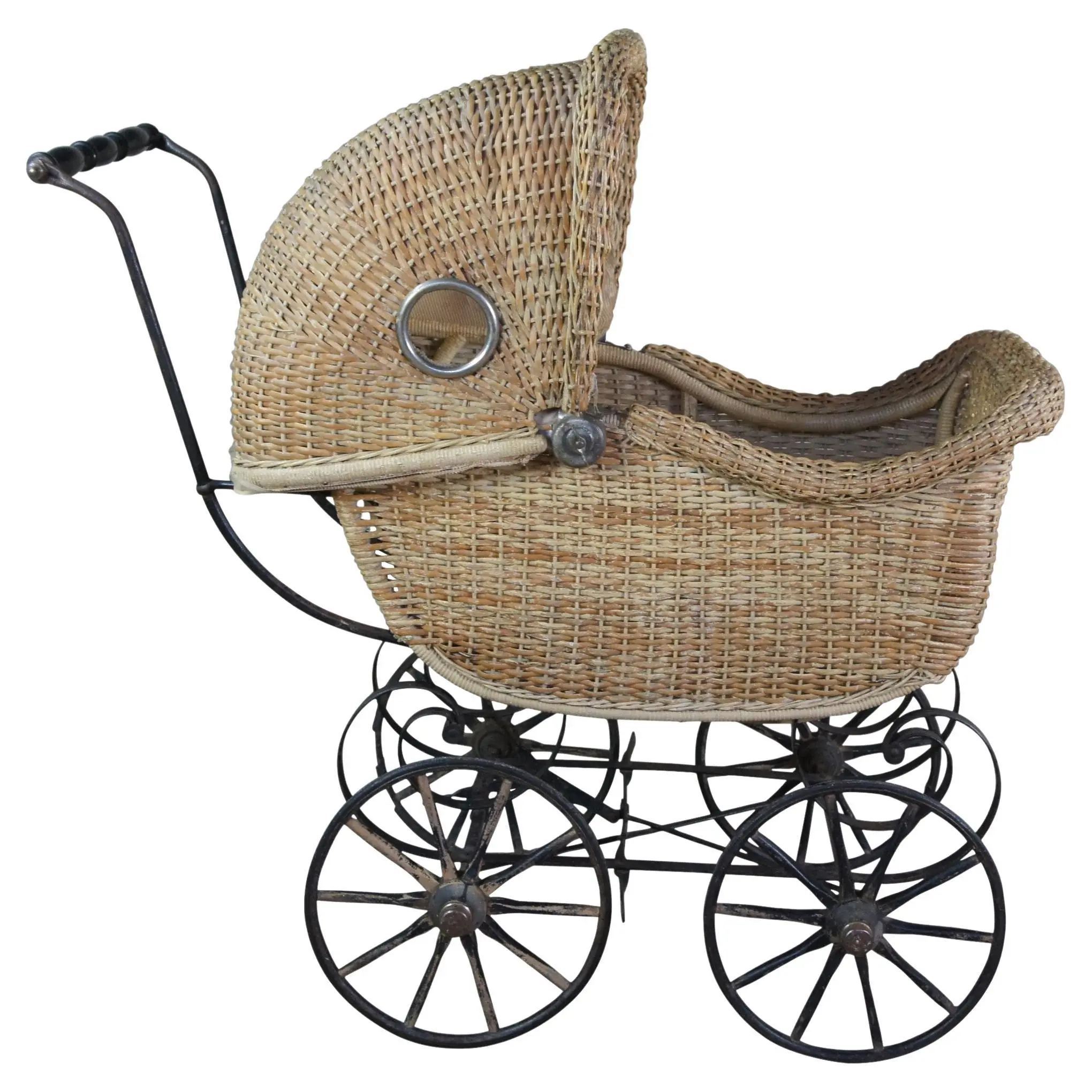
Key Features of Victorian Style Wicker:
- Curved Spiral Design
- Spit Curl wooden bead trim
- Spider-web cane work
- Plane cane seats and seat backs
- Splayed legs
Wicker Trends in Europe
Romans were inspired by Egyptian wicker and used it to make furniture. This style spread across the entire empire. During 17th century European times, wicker was a popular technique used to make baby furniture, including everything from cribs to bassinets. One reason why wicker was so favorable was the fact that its woven design made it breathable and more comfortable than solid wood or metal chairs. It was also easier to clean than upholstery. Perhaps best of all for consumers was the fact that raw materials were cheaper than lumber.
Wicker had spread across other areas of the globe and was largely seen as an exotic furnishing form with elaborate, intricately detailed decorations. Many people loved it because of the attention to detail that was put into each piece.
Wicker Furniture in the New World

A grocer by the name of Cyrus Wakefield discovered a large bundle of rattan at a Boston dock after witnessing by products of his in-laws shipping business (his wife was the daughter of a wealthy shipping magnate). These materials were used to keep the cargo from shifting around in rough waters during the voyage from Asia. Leftovers were often abandoned on the docks until they died but Wakefield had a better idea. He took home an armful of the rattan and wove it around the frame of his chair. Wakefield saw potential in these vines and sold his small grocery store to found the Wakefield Rattan Company.
At the time, wicker was completely new to Early Americans and was fascinating to say the least. Wicker furniture quickly became very popular and the demand for basket and furniture makers grew rapidly. Wakefield was importing shiploads of rattan reeds to meet the growing demand for trendy wicker furniture sets, baskets, and stylish baby carriages.
During this time, wicker furniture was used inside the home, on the front porch, and even in the garden. Wakefield Company dominated the industry but was opposed by its largest competitor, Heywood Brothers & Company, who was the largest manufacturer of wood furniture at the time. The tides shifted when Heywood Brothers & Company developed machinery to automate the process with a loom that could weave the cane. This reduced the price dramatically and the two companies competed heavily during the 1870’s-1880’s.

Wakefield Company and Haywood Brothers & Company ultimately merged to form Heywood-Wakefield Company in 1897. This merger consolidated two of the largest manufacturers’ resources in a deal that included designers and master craftsmen. It is actually possible to view a copy of the first catalog that was released by Heywood-Wakefield Company in 1898.
The Heywood-Wakefield Company continued to thrive until the 1930’s, when wicker’s popularity began to fade. This was largely due to the favorability of design with clean and simple lines that made Victorian Style wicker far too elaborate for the average American home. Heywood-Wakefield Company stopped making furniture completely in 1979. In 1989, the old manufacturing facility of Wakefield Company was designated by the National Register of Historic Places. Sadly, the remaining buildings were demolished in 2005.
For more information on the Wakefield Rattan Company, visit wakefieldhistory.org.
A Brief Revival in the 1960’s & 1970’s
Wicker furniture had a brief revival in the 1960’s and 1970’s when antique wicker furniture was trendy. After a period where Victorian Style decor was seen to be overly sophisticated, we again saw a resurgence of ornate wicker furnishings. This resulted in a Renaissance of sorts as the beauty of wicker furniture was once again appreciated and welcomed inside and around the home.
While the popularity of wicker furniture began to wane slightly during the 70’s, the popularity of wicker remained steady throughout the next few decades. In recent years, wicker furnishings have become very popular and have been featured in many upscale commercial venues and beachside vacation resorts.
Wicker Furniture in Contemporary Times
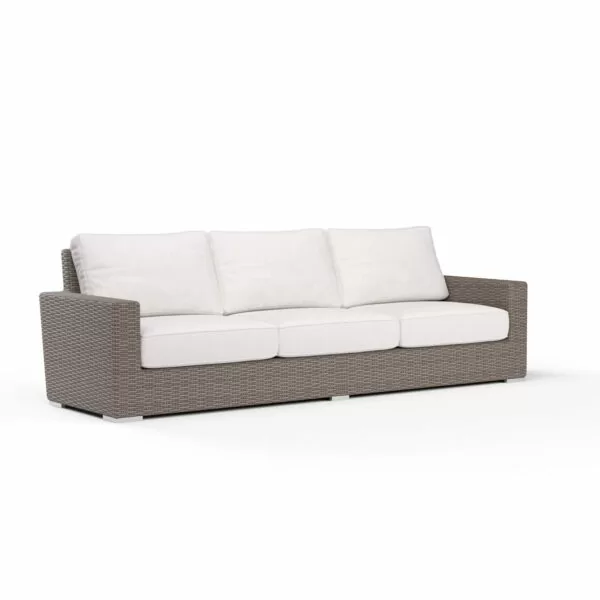
The art and craft of wicker is still taught to keep this traditional art form alive. Although modern technology makes the production process more efficient, all wicker furniture is still handmade, keeping quality and craftsmanship a staple of this ancient art form. Modern wicker furniture is seen to be sleek, artful, and improved from the past historical materials and techniques used.
Modern wicker tends to follow Mission Style Furnishing trends that originated in 1894. Mission style furniture placed an emphasis on simple horizontal and vertical lines and flat panels that accentuated the grain of the wood. This came directly after the Victorian Era where highly ornate and elaborate decor was fashionable. After this period, consumers were looking for simpler designs. Today, we see the same emphasis being placed on modern and contemporary wicker furnishings.
Newly refined materials and production processes have made wicker furniture more affordable and much more durable than they were in the past. Marshal B. Lloyd was the first designer who began producing synthetic wicker furniture. Modern wicker furniture not only lasts longer than wicker made from vine fibers but it can be found in a wide range of finishes to match your indoor/outdoor decor. In fact, certain HDPE wickers are infused with UV Inhibitors to prevent fading and make the wicker materials the same color through and through so your furniture is immune to scratches and nicks. This makes it possible to use wicker furniture outdoors without worrying about it being damaged by the weather. Synthetic wicker is also pest resistant unlike natural wicker.
Although the Heywood-Wakefield Company ceases to exist, many reputable modern wicker manufacturers like Harmonia Living, Sunset West, and Forever Patio exist. The most popular styles of modern wicker furniture change with trends lasting a few years at a time. In 2015, rounded wicker is projected to become desirable. These thick wicker sets look more similar to the rounded strands of natural vine fibers giving it a fuller appearance.
To view modern wicker furnishings, please visit Patio Productions.com.
Related Topics:
- The 5 Best Outdoor Wicker Furniture Brands
- How to Choose Quality Wicker Furniture Without Paying the Price
- Can You Use Wicker Furniture Outside?
- Natural vs Synthetic Resin Wicker
- Wicker vs Rattan – What’s the Difference?
Mike Bowman is currently the technical product manager and lead editor at Patio Productions. He has worked in the furniture industry as a copywriter, developer, and content creator for the last 14 years, among other roles. An avid DIY-er, he loves to experiment with furniture, landscape design, and home improvement in his own home.

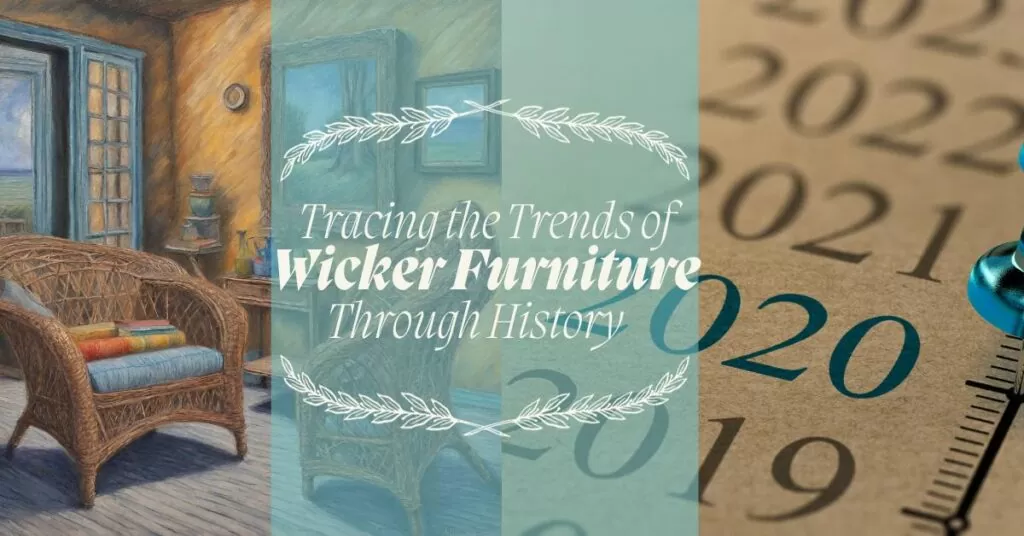
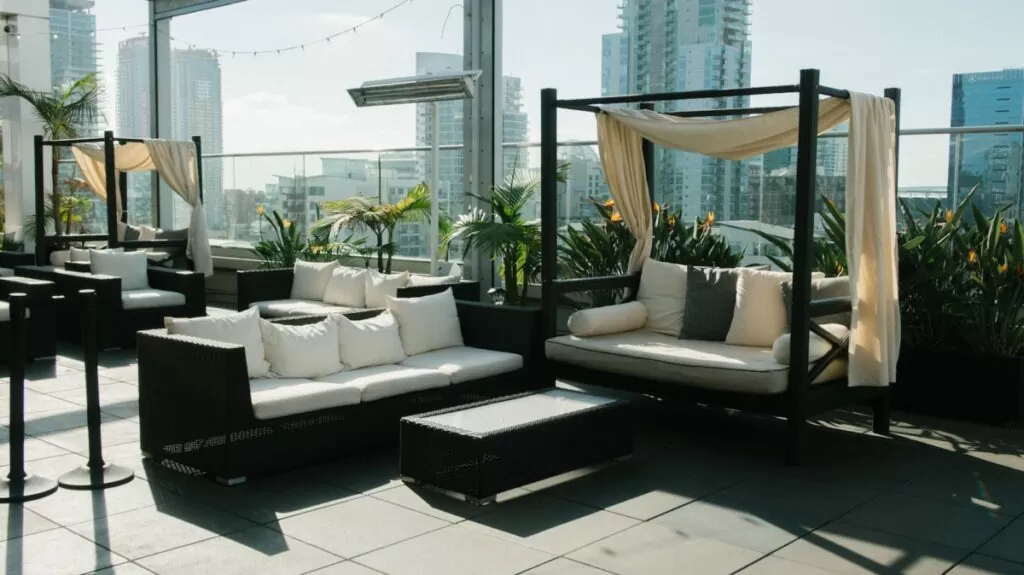
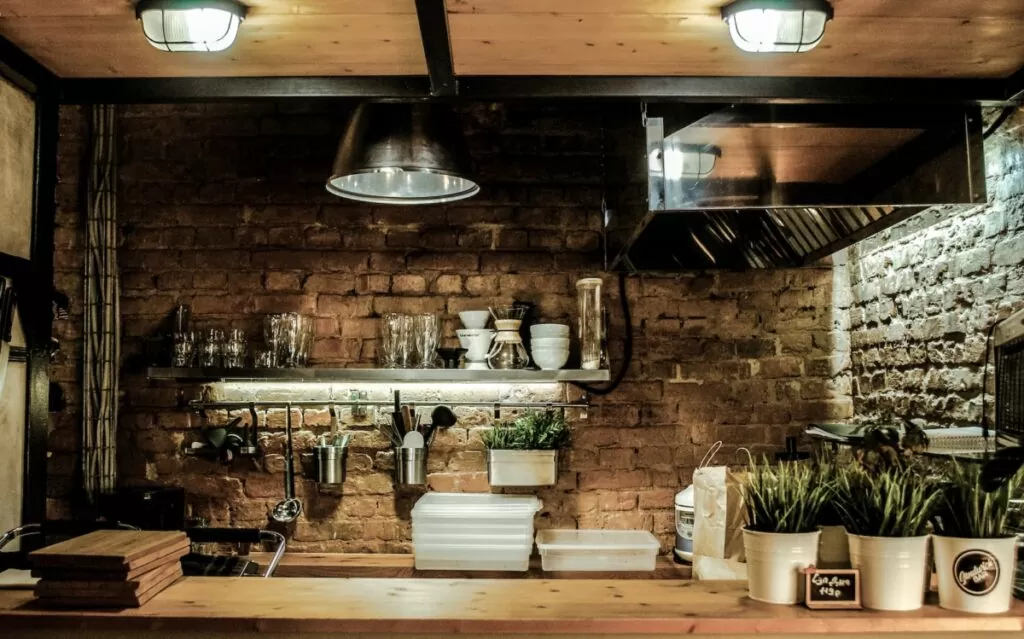

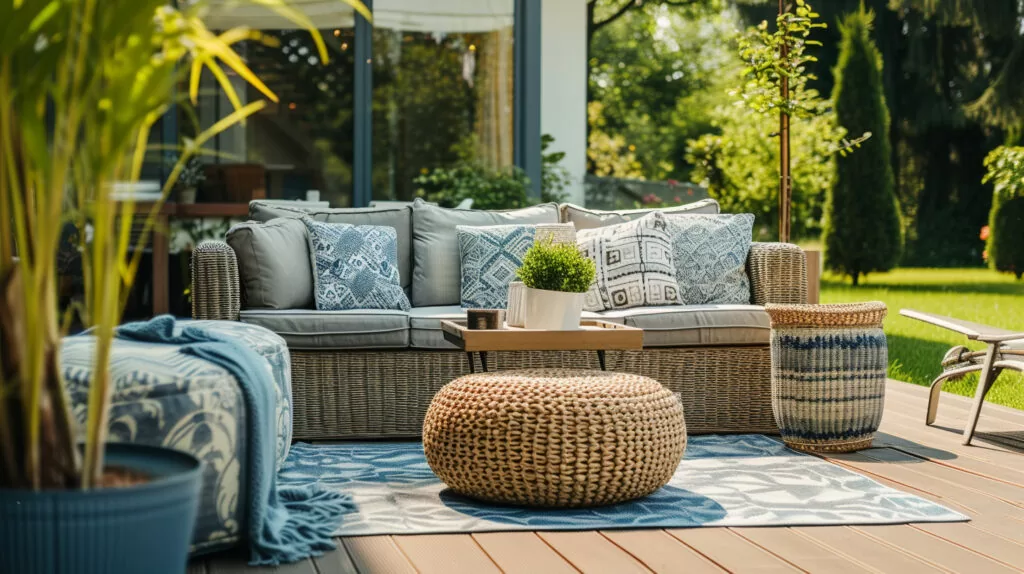

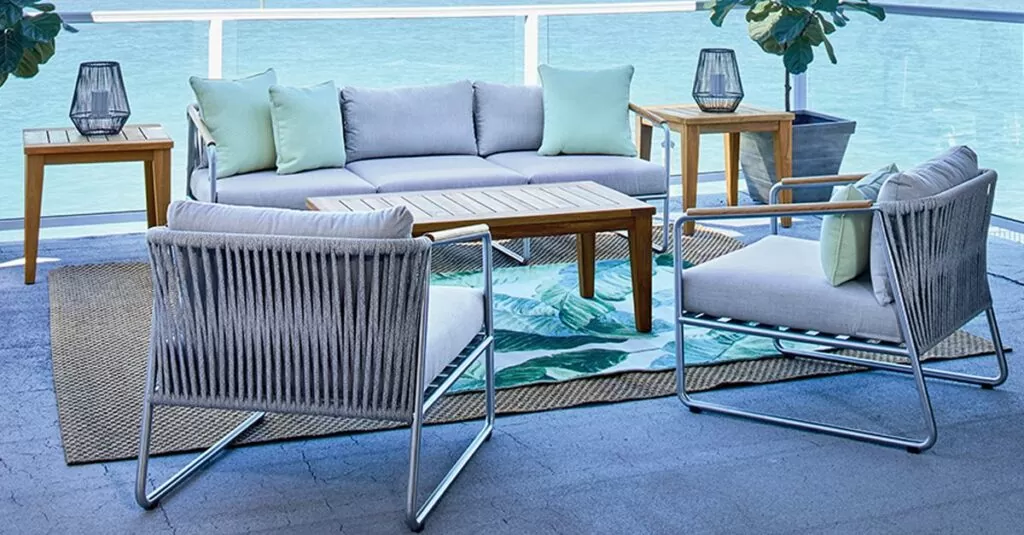

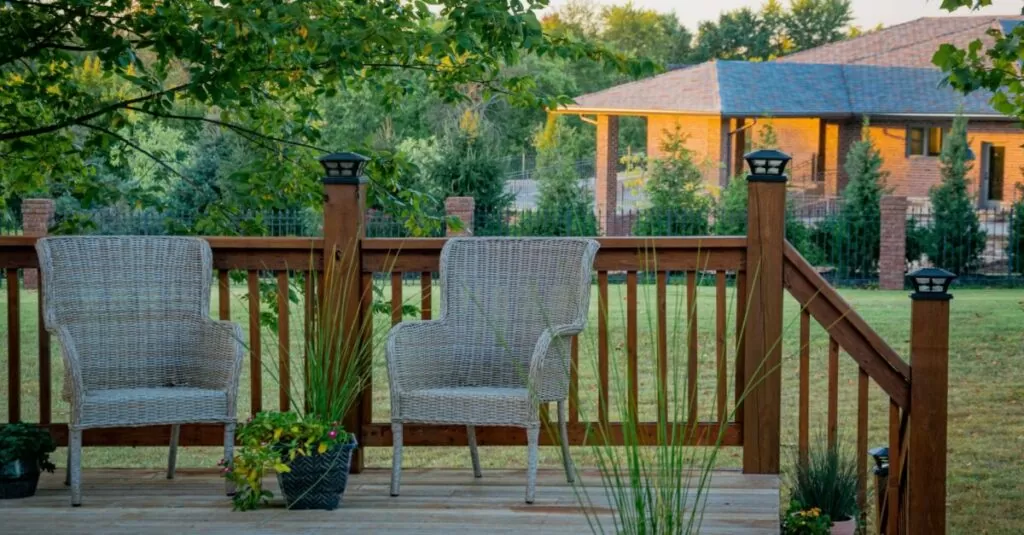

Cheryl thank you for this informative article. I have an old baby doll carriage made by this company, but it is not rattan…it is all wood body. The label on the bottom reads Heywood Wakefield Gardner, Ma. Can’t read to number…too faded
Wicker planter was red then green painted white 55 years ago. Would red point to a certain time of manufacturing?
I have a chair and couch that has been in our family as long as I can remember. I have noticed that the back of the couch is bowing out and seems to be getting weak. I want to keep it but with grand kids it is not as use able. I am wondering what is the best way to preserve this set to continue to pass down in our family. Is this possible for me to do?
So very interesting.
I have a four piece rattan that is Haywood Wakefield that my Mother and Father purchased. It is now in my care. It’s a love seat, two chairs and a glass top table all in ivory.
That sounds lovely. Take good care of it and you may be able to pass it down to the next generation.
I liked this article. I was hoping to see more pictures as I am looking for design ideas, specifically color choices. Thank you, Donna
Nice information and good history of wicker furniture. Thanks buddy.